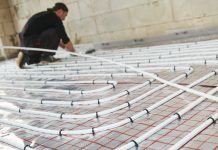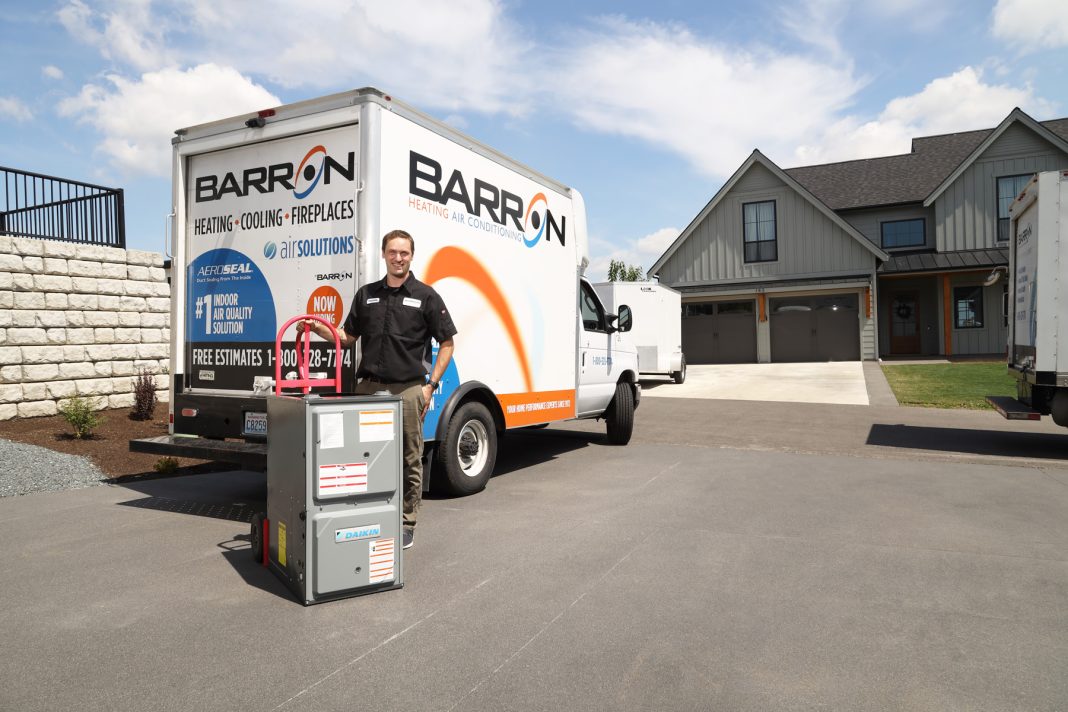Submitted by Barron Heating AC Electrical & Plumbing
Ring ring! Class is in session — and today’s mini lesson is on air conditioners. Do you know how they work? Air conditioners take advantage of a remarkable physical law called Phase Conversion: where a liquid converts to a gas and back again to absorb heat. AC units utilize a cooling agent called refrigerant to capitalize on this process, causing the agent to evaporate and condense again and again in a closed system of coils. When warm air passes over the cold, low-pressure coils, the refrigerant inside absorbs the heat as it changes from a liquid to a gas, then rejects the absorbed heat elsewhere — typically outdoors. The gas is then put under high pressure to convert it back to a liquid, resulting in — you guessed it — cool air (howstuffworks.com).
Refrigerant is essential to cooling equipment, including central air conditioners, heat pumps, and refrigerators. But new state and federal laws relating to these refrigerants are again headed our way. The coming years will bring new regulations from entities like the EPA and DEQ to lessen their environmental impact — changes that will impact both the HVAC industry and the consumer.
Refrigerants such as R-454B and R-32 are two possible solutions to help states reach greenhouse gas reduction goals. As a single-component, low GWP HFC (Global Warming Potential Hydrofluorocarbon), R-32 specifically is simple to work with and has been widely accepted by manufacturers worldwide. Invented in 2012 by Daikin, a leading multi-national HVAC manufacturer, its excellent thermodynamic properties allow equipment to be designed with a lower charge and smaller motors, piping, and heat exchangers while retaining the same power and efficiency as before. In addition to energy savings, fewer raw materials are needed for manufacturing the equipment, making it an all-around strong choice for the future of refrigeration.
With a change in cooling agent regulations comes a change in safety standards and building codes as well. To reduce global warming impacts, the bonds in these refrigerants must be looser — which increases their flammability. R-32 is in a category known as “A2L”, meaning it is flammable, but its flammability is extremely low compared to that of hydrocarbon refrigerants such as R-290 (propane) (daikin.com).
What does all of this mean for you? It means change. Change in how cooling equipment is designed, how it operates, and how it impacts our environment. It means a change in what and how equipment can be sold and installed. And while energy savings are expected, it means new equipment will inevitably get a price-hike — by as much as 15-20%.
So, if you’re considering new cooling equipment for your home, now may be the best time to pull the trigger before prices spike. Current models offer almost identical energy efficiency as their newer counterparts. If a heat pump is on your radar, the new Daikin Fit Enhanced through Barron Heating AC Electrical & Plumbing is one worth considering. It’s quiet, compact, and energy-saving, with better comfort, control, and efficiency than many of its competitors. Plus, it qualifies for the 25c energy efficiency tax credit where you can get up to 30% back on the purchase and installation cost of qualified home upgrades. And for a limited time, Barron is offering the Daikin Fit Enhanced for either $109 per month, or same as cash — meaning you can install now and pay no interest, and no payments for 12 months.
Designing for the most negligible environmental impact is the way of the future — from the refrigerator in our kitchen to the car we drive to how we cool our home. With new refrigerant regulations quickly approaching, our team at Barron encourages you to plan ahead and snag a deal before these regulations impact your pocketbook. With our new same-as-cash offer, you’ll pay nothing for a full year while locking in today’s prices — no matter what 2024 has in store. Knowledge is power, and it’s our goal to provide you with the best education on our industry and your home that we can — so call today! As your Pacific Northwest home and building performance experts since 1972, we stand by our mission of improving lives.




































